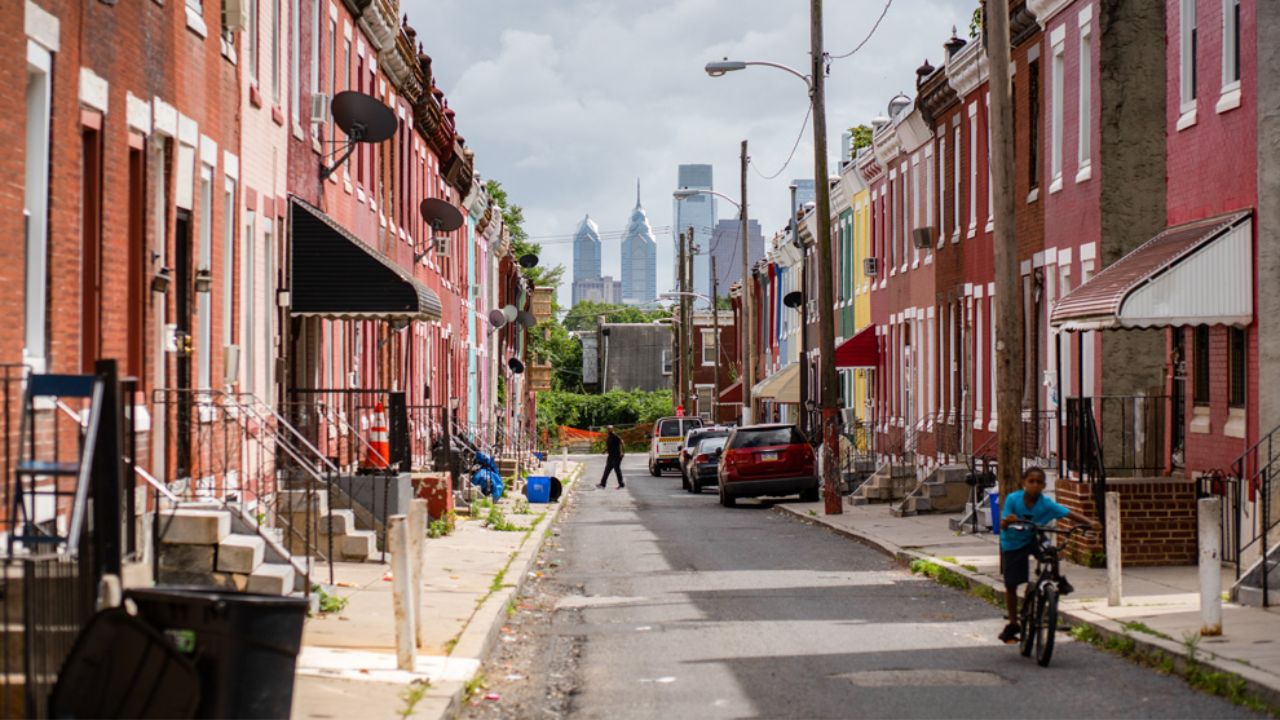Philadelphia County, also known as the City of Philadelphia, stands as Pennsylvania’s most populous county and ranks sixth in the nation in terms of population. The 2020 census recorded approximately 1.6 million residents. However, the county’s economic landscape paints a less rosy picture.
According to the Blue Streak News Online, In 2020, the median household income in Philadelphia County was $46,116, lagging behind the state average of $63,463 and the national average of $67,521. Furthermore, the poverty rate in the county hit 23.3% in 2021, significantly surpassing both the state rate of 12.4% and the national rate of 12.8%.
Nevertheless, it’s important to recognize that not all areas within Philadelphia County share the same level of economic development and social well-being. Some neighborhoods confront a host of challenges, including low income, high poverty, elevated unemployment rates, limited educational attainment, and inadequate access to essential services like healthcare.
This article delves into five of the county’s most impoverished neighborhoods, as indicated by data drawn from the U.S. Census Bureau’s American Community Survey (ACS) for the years 2017-2021. The following criteria are employed to assess poverty:
1. Tioga-Nicetown:
Located in northwestern Philadelphia County, near Germantown and Hunting Park, Tioga-Nicetown is primarily an urban area with a predominantly Black or African American population. It is home to around 18,000 residents but grapples with severe socio-economic challenges, including:
- A median household income of $23,750, which is 48.5% lower than the county median and 64.8% lower than the national median.
- A poverty rate of 44%, nearly double the county rate and over three times the national rate.
- An unemployment rate of 17%, more than twice as high as the county rate and national rate.
- An educational attainment rate of 69%, signifying that only about two-thirds of the adult population had completed high school or higher.
2. Fairhill:
Situated in north-central Philadelphia County, near Kensington and Harrowgate, Fairhill is another urban area characterized by a predominantly Hispanic population reflecting the neighborhood’s cultural diversity. It houses approximately 27,000 residents but grapples with significant socio-economic disparities, including:
- A median household income of $24,167, which is 47.6% lower than the county median and 64.2% lower than the national median.
- A poverty rate of 49%, more than double the county rate and almost four times the national rate.
- An unemployment rate of 16%, more than twice as high as the county and national rates.
- An educational attainment rate of 48%, indicating that less than half of the adult population had completed high school or higher.
3. Strawberry Mansion:
Nestled in north-central Philadelphia County, near Fairmount Park and Brewerytown, Strawberry Mansion is an urban area with a predominantly Black or African American population. It is home to around 15,000 residents but faces considerable socio-economic hardships, including:
- A median household income of $25,417, which is 44.9% lower than the county median and 62.4% lower than the national median.
- A poverty rate of 46%, nearly double the county rate and over three times the national rate.
- An unemployment rate of 15%, more than twice as high as the county rate and national rate.
- An educational attainment rate of 66%, meaning that only about two-thirds of the adult population had completed high school or higher.
4. Haddington:
Located in west-central Philadelphia County, near Cobbs Creek and Overbrook, Haddington is primarily an urban area with a predominantly Black or African American population. It houses approximately 21,000 residents but grapples with substantial socio-economic disparities, including:
- A median household income of $26,250, which is 43% lower than the county median and 61.1% lower than the national median.
- A poverty rate of 36%, more than one-and-a-half times higher than the county rate and almost three times higher than the national rate.
- An unemployment rate of 12%, nearly twice as high as the county rate and national rate.
- An educational attainment rate of 70%, indicating that only about two-thirds of the adult population had completed high school or higher.
5. Mantua:
Mantua, positioned in west-central Philadelphia County, near University City and Powelton Village, is an urban area with a diverse population, including Blacks, Whites, Asians, and Hispanics. It is home to approximately 15,000 residents but contends with significant socio-economic disparities, including:
- A median household income of $27,083, which is 41.3% lower than the county median and 59.9% lower than the national median.
- A poverty rate of 38%, nearly double the county rate and almost three times the national rate.
- An unemployment rate of 11%, nearly twice as high as the county rate and national rate.
- An educational attainment rate of 72%, indicating that only about three-fourths of the adult population had completed high school or higher.
Conclusion:
Philadelphia County, also recognized as the City of Philadelphia, is a historically rich and diverse region with a high population density and a robust economy. Nevertheless, it grapples with notable disparities in income, poverty, unemployment, and education among its neighborhoods. Some of its most impoverished neighborhoods include Tioga-Nicetown, Fairhill, Strawberry Mansion, Haddington, and Mantua.
These areas face multiple challenges, including low income, high poverty rates, elevated unemployment, limited educational attainment, and insufficient access to vital services like healthcare. Addressing these issues necessitates collaborative efforts from various stakeholders to improve the quality of life and well-being of residents.

